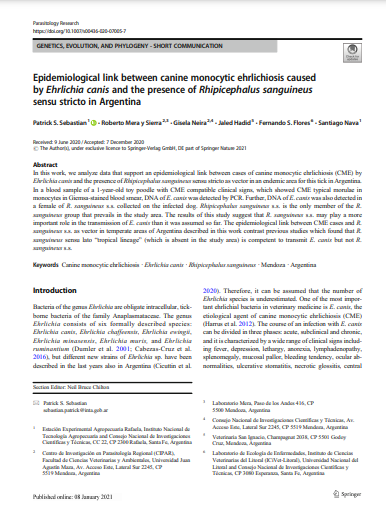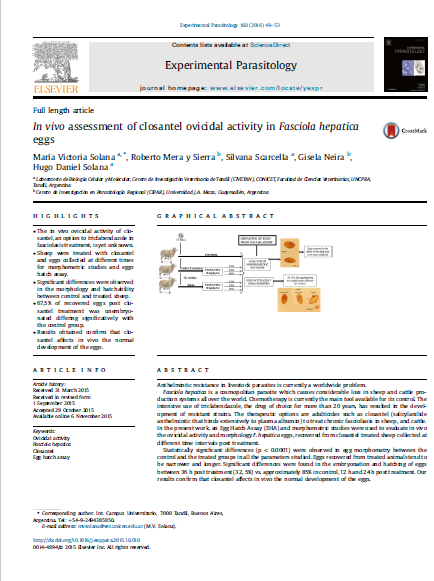Browsing Ciencias veterinarias by Author "Neira, Gisela"
Now showing items 1-2 of 2
-
Epidemiological link between canine monocytic ehrlichiosis caused by Ehrlichia canis and the presence of Rhipicephalus sanguineus sensu stricto in Argentina
Sebastian, Patrick; Mera y Sierra, Roberto; Neira, Gisela; Hadid, Jaled; Flores, Fernando; Nava, Santiago (Parasitology Research Editorial, 2021-01-08)In this work, we analyze data that support an epidemiological link between cases of canine monocytic ehrlichiosis (CME) by Ehrlichia canis and the presence of Rhipicephalus sanguineus sensu stricto as vector in an endemic area for this tick in Argentina. In a blood sample of a 1-year-old toy poodle with CME compatible clinical signs, which showed CME typical morulae in monocytes in Giemsa-stained blood smear, DNA of E. canis was detected by PCR. Further, DNA of E. canis was also detected in a female of R. sanguineus s.s. collected on the infected dog. Rhipicephalus sanguineus s.s. is the only ... -
In vivo assessment of closantel ovicidal activity in Fasciola hepatica eggs.
Solana, María Victoria; Mera y Sierra, Roberto; Scarcella, Silvana; Neira, Gisela; Solana, Hugo Daniel (Editorial Experimental Parasitology, 2016)Anthelmintic resistance in livestock parasites is currently a worldwide problem. Fasciola hepatica is a cosmopolitan parasite which causes considerable loss in sheep and cattle production systems all over the world. Chemotherapy is currently the main tool available for its control. The intensive use of triclabendazole, the drug of choice for more than 20 years, has resulted in the development of resistant strains. The therapeutic options are adulticides such as closantel (salicylanilide anthelmintic that binds extensively to plasma albumin) to treat chronic fascioliasis in sheep, and cattle. In ...











